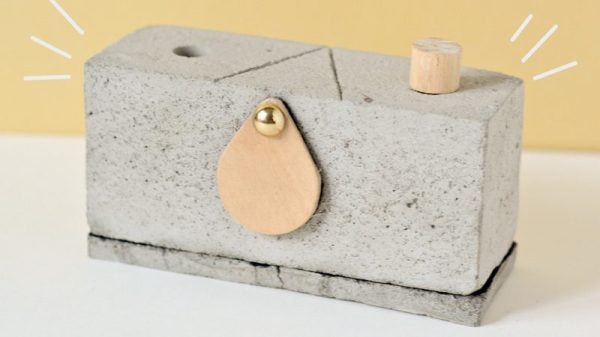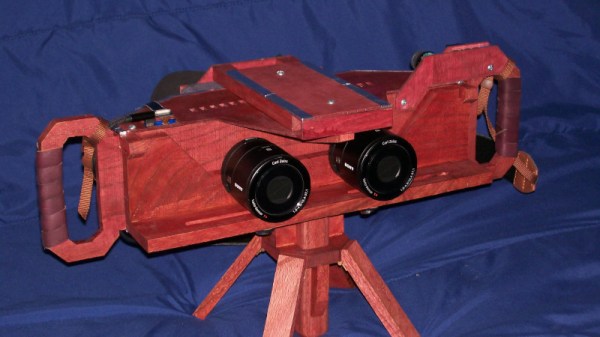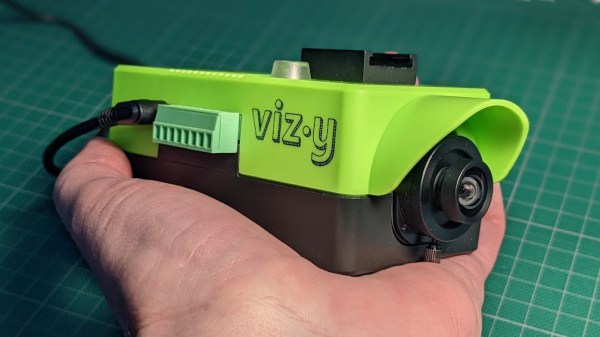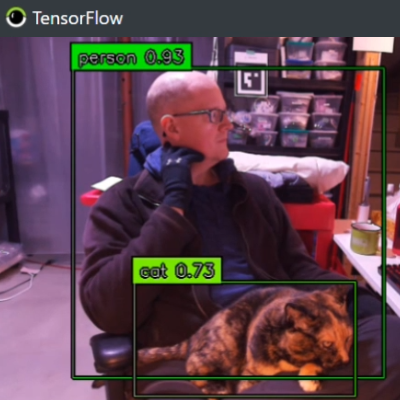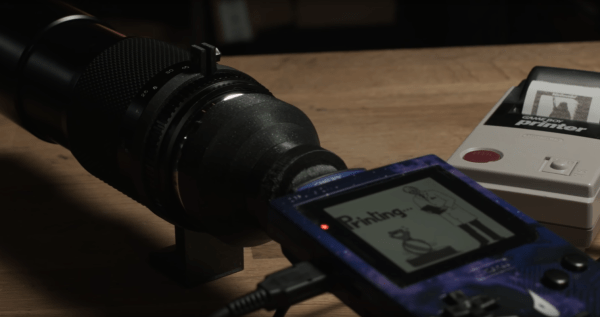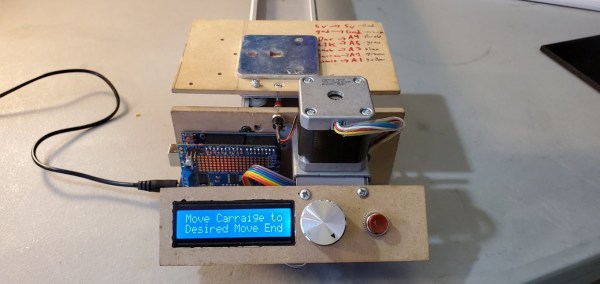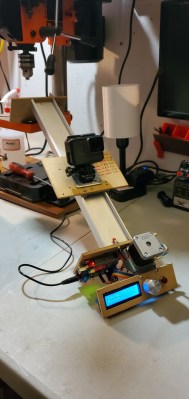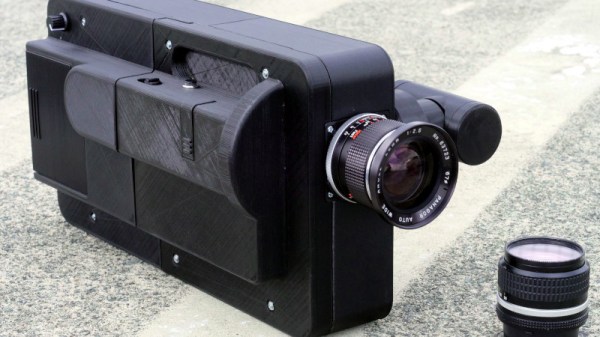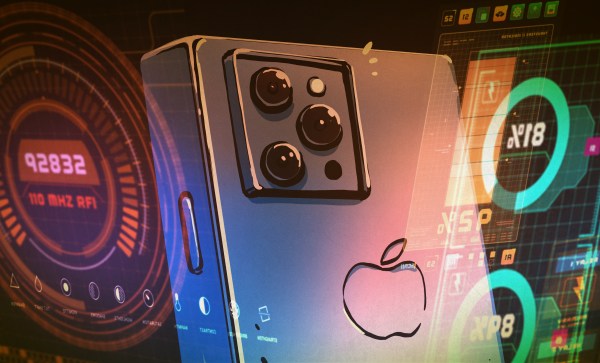A pinhole camera is a simple device that can be built out of virtually any simple closed chamber, and is a great way to learn about the basic principles of photography. [amuu] has created a version that can be readily made out of concrete, of all materials!

The build starts with the creation of a mold for the concrete, using laminated sheets of foam. The foam is assembled with cut-up pieces of a ballpoint pen serving as cores in the mold. This provides a space for the film winders in the final product. The concrete is then mixed and poured into the mold, and allowed to set. Tapping or vibrating the mold is key to getting all the air bubbles out of the mixture.
Once set, the foam is mechanically removed from the concrete and the camera can be finished off. The internals are given a lick of black paint to improve the camera’s light-tightness. The shutter, pinhole, and film winder are then also fitted to allow the camera to function.
[amuu]’s first attempt to take photos with the camera lead to some results that were pleasingly lo-fi. There are overscan issues on the film and some other artifacts, but overall, the results are esoteric and fun. If you’re not a fan of the concrete camera, though, you can always consider making a 3D-printed pinhole camera instead!

